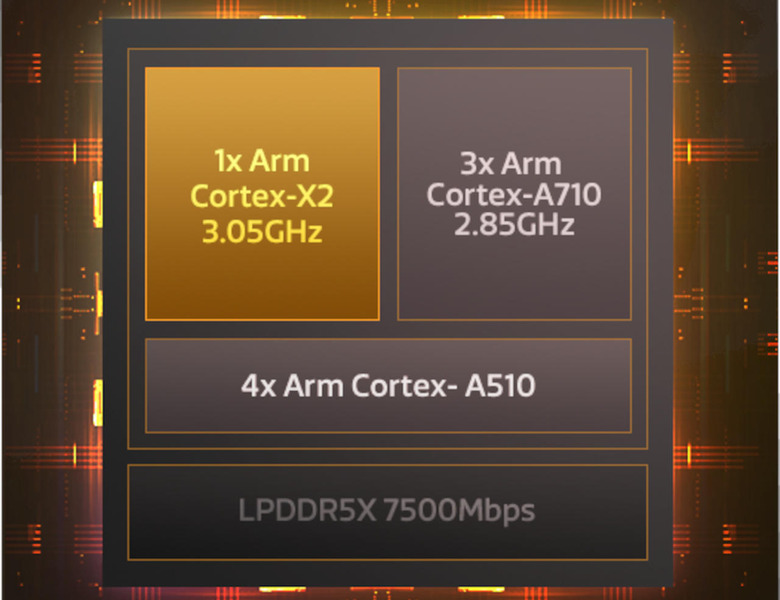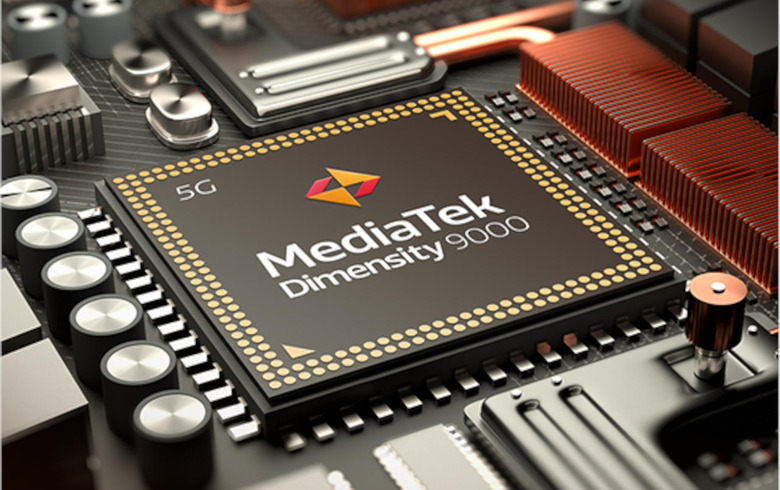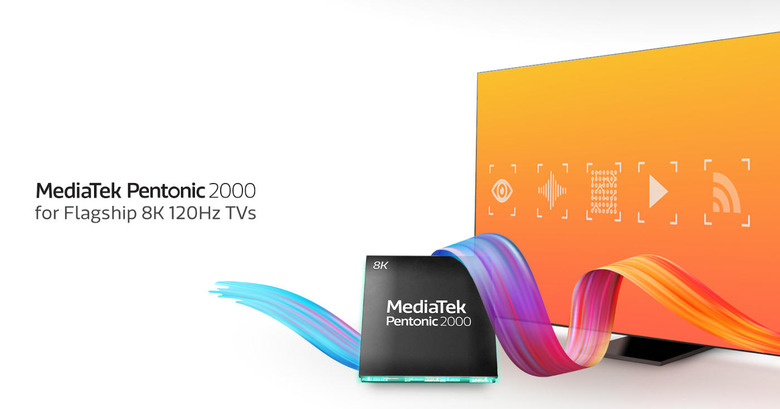MediaTek Dimensity 9000 Takes Its Qualcomm Rivalry To The Next Level
For years, MediaTek has been widely regarded as the "cheaper" alternative to Qualcomm's Snapdragons, sort of like the AMD of the mobile world. Just as AMD has been chipping away at Intel's dominance since the rise of its Ryzen line a few years back, MediaTek has been gaining ground in the smartphone space. Spurred by its success in the past few quarters, MediaTek is making its biggest stab at changing the status quo, and the new Dimensity 9000 is just the opening salvo.
Uphill Battle
MediaTek's chips have traditionally been used in entry-level and mid-range phones, giving it a bit of an unfair image as a lackluster mobile processor. Of course, compared to the high-end Snapdragon of that time, there was indeed a wide performance gap between Qualcomm's best and MediaTek's top-of-the-line. That was well in the past, however, and a lot has changed since then.
The past consecutive quarters have been kind to MediaTek as the Taiwanese company has led the mobile chip market since 2020. Various factors contributed to this positive change, including the pandemic, mid-range 5G phones, and even Huawei HiSilicon's exit. All throughout, however, MediaTek was still playing it safe in markets it already covers, but the Dimensity 9000 marks the first time it will be facing Qualcomm head-on in the premium flagship market.
CPU and Memory
The MediaTek Dimensity 9000 claims a few firsts for mobile application processors (APs), and those aren't just boasting rights. Being the first to utilize TSMC's 4nm process, for example, hints at its improved bargaining position and clout in the industry. Then again, it has fewer rivals on this front for now, with Qualcomm using Samsung's foundry and HiSilicon not having access at all. Apple will most likely jump on the 4nm train but not until next year's iteration.

MediaTek's new flagship processor is also the first to use ARM's latest ARMv9 design with a few modifications. The Dimensity 9000 goes all out with a Cortex-X2 clocked at 3.05GHz, three Cortex-A710 cores at 2.85GHz, and four Cortex-A510 cores at 1.80GHz. These cores are primed for performance, especially for single-core performance, but clock frequencies aren't the only basis for a processor's throughput.
Memory also plays a big role in performance, and the Dimensity 9000 boasts a large 6MB system cache for that. Additionally, it is the first to advertise support for the new LPDDR5X RAM, though that isn't yet available in the market. Long story short, MediaTek is aiming to at least run head-to-head with Qualcomm or even Apple, and the numbers might go in its favor this year.
Graphics and Cameras
Graphics power has become a big topic in mobile these days, especially with Samsung adopting AMD's rDNA technology for the Exynos 2200. MediaTek, however, is sticking to Arm's official GPU IP and is the first to use the new Mali-G710, and it might be the only one for the next generation of mobile chipsets. Qualcomm, of course, uses its own Adreno graphics for its next-gen Snapdragon 898 or 895.

The chip will be able to support WHQD+ resolution display running at 144Hz or FHD+ displays at 180Hz. That's definitely a lot higher than what most MediaTek phones carry right now and more along the lines of high-end flagships. The Dimensity 9000 also supports 10-bit HDR+ Adaptive and 8K AV1 decoding, though AV1 encoding is still not supported.
The chip also boasts of three ISPs (image signal processors), which can be utilized for running three 32MP sensors at the same time. This can be useful for computational photography as well as video recording using multiple cameras at the same time. The ISP is also the first to support 320MP sensors, even though those don't exist in market-ready devices just yet.
Machine Learning and 5G
Google's Tensor chip changed the narrative around mobile processors just a bit, putting a heavier focus on machine learning and AI that powers certain features. MediaTek, of course, claims impressive numbers for AI benchmarks, with the Dimensity 9000 utilizing the CPU, GPU, and NPU (which the company calls an APU or AI Processing Unit) together, almost the same way that the Tensor does. Like many performance claims, this still has to be tested in the real world once the first phones with this chip come out.

5G is one of the ways that MediaTek gained the upper hand over Qualcomm, flooding the market with affordable 5G handsets. The Dimensity 9000 continues that new legacy, emphasizing MediaTek's advantage in performance and power efficiency. Unfortunately, it still lacks support for mmWave 5G, which MediaTek defends as a decision based on how the technology isn't in use or even in demand in markets that it serves.
Wrap-up: Just the beginning
With the Dimensity 9000, MediaTek is stepping up its competition with Qualcomm and even Apple, trying to prove that it, too, can play ball. While its actual performance still has to be tested, the chipmaker is putting its best foot forward and is throwing all that it has on its flagship 5G SoC. Phones, however, aren't the only ones that will benefit from MediaTek newfound ambition.

The company also announced a new Pentonic 2000 chipset for 8K 120Hz smart TVs and teased a Kompanio 1200 for Chromebooks. MediaTek is clearly casting its net wide to capture multiple markets, especially ones that Qualcomm would traditionally dominate, reminding the famed chipmaker that it should rest on its laurels for too long.
